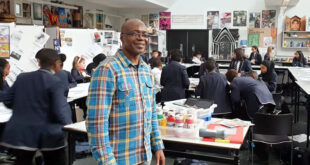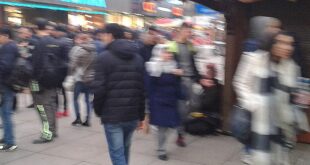Since the beginning of May this year, social networks across Africa and its Diaspora have been saturated with photos and videos showing horrified people demonstrating the presence of plastic in food items, like rice and eggs. Yet most of these videos don’t have a grain of truth (or plastic) in them. Alexandre Capron, a French journalist and member of the Observer Team of France24 (OTF), has looked into the origins of these conspiracy theories and how their propagation has led to calls for increased protectionism and conflated nationalism in different countries across the continent.
This article is the first in a two-part series in which Capron takes a look at three popular videos and show how they seek to manipulate viewers into believing this plastic rice conspiracy.
For the past month, videos purporting to show rice made out of plastic have been circulating on social media in numerous African countries including Senegal, Burkina Faso, Ivory Coast and Gambia. Some of these videos seem to show these food items being manufactured. In other videos, people film themselves performing tests on suspicious food items to show that they are really made of plastic.
The Observers team has identified at least 16 different videos about plastic rice that have surfaced online in the past five weeks. However, some of them are easy to recognize as hoaxes. We take a closer look at three videos debunked by our team.
-
Proof that plastic rice is being manufactured? No, just plastic pellets
One of the most widely shared videos purports to show plastic rice being manufactured in a factory. First, the camera focuses on two men feeding transparent sheets of plastic into a machine, which spits out long, thin ribbons, which enter another machine. The camera then focuses on the supposed result: tiny, almost translucent pellets, which, according to the many people who shared this video, look just like rice.
However, there is a small detail that provides a clue to what is actually being made at this factory. Roughly 49 seconds into the video, you can see a bag that says “Eva”. A quick online search reveals that “Eva” is the name of a product made by Chinese company, Sinopec, which makes polyethylene. The tiny granules that the machine is spitting out are probably plastic pellets used to protect fragile objects, such as glass, when it is packed into boxes.

A bag sits on the ground. If you look online, this same bag appears on a retail website on the page where you can buy Ethylene Vinyl Acetate, or plastic packing pellets meant to cushion fragile objects.
If you search “pellet filling” online, you can pull up many other videos showing exactly the same type of machines making packing materials.
-
Rice that burns? Yes, it’s possible
Many people are also sharing videos that show rice catching fire or burning into cinders. Those who share these videos claim that this is evidence that some rice being sold contains plastic.
The France 24 Observers team reached out to Dr. Alfred Bernard, a toxicologist at the University of Louvain in Belgium. Bernard was solicited by the Belgian media in May after a consumer claimed to have found plastic pellets being sold as rice [link in French]. Bernard agreed to reproduce the tests that he had carried out on what he called “high quality rice” manufactured by Uncle Ben’s.
The video (below) shows his conclusions.
Uncooked rice that is of excellent quality, when heated above a flame, burns as is described in the video. I was able to get good flames going. There’s another test you can do, too — just burn plastic and smell it. Burnt rice doesn’t smell anything like it.
-
Rice that bounces? Nothing out of the ordinary!
In other videos, people form rice into balls and toss it on the ground. Surprisingly, it turns out to be as bouncy as a tennis ball — proof, say some social media users, that the so-called rice is actually made from plastic.
Yet the fact that these rice balls bounce is no surprise to Doctor Fallou Sarr, the director of Dakar’s Food Technology Institute.
“At our institute, we carried out tests on rice that people in Senegal had flagged as suspicious. Our results showed that the rice that people thought was made out of plastic was actually just old rice — rice that was more than two years old. Other tests proved that there was absolutely no plastic in this rice.
So, why does it bounce? In fact, the starch in rice contains two components: amylose, which makes rice tough and hard, and amylopectin, which makes it sticky. However, when rice is more than a few years old, the amylose diminishes and amylopectin increases. When we heat up the rice, it becomes very sticky and, when it dries, it becomes extremely condensed. So it’s not surprising that it bounces when you throw it on the ground.”
If you want to know more about where the rumours about plastic rice came from and understand why these videos have become so popular on social media across Africa, check out the second part of the investigation – “Plastic Rice” (Part 2): The videos tricking African social media
 THE AFRICAN COURIER. Reporting Africa and its Diaspora! The African Courier is an international magazine published in Germany to report on Africa and the Diaspora African experience. The first issue of the bimonthly magazine appeared on the newsstands on 15 February 1998. The African Courier is a communication forum for European-African political, economic and cultural exchanges, and a voice for Africa in Europe.
THE AFRICAN COURIER. Reporting Africa and its Diaspora! The African Courier is an international magazine published in Germany to report on Africa and the Diaspora African experience. The first issue of the bimonthly magazine appeared on the newsstands on 15 February 1998. The African Courier is a communication forum for European-African political, economic and cultural exchanges, and a voice for Africa in Europe.

































